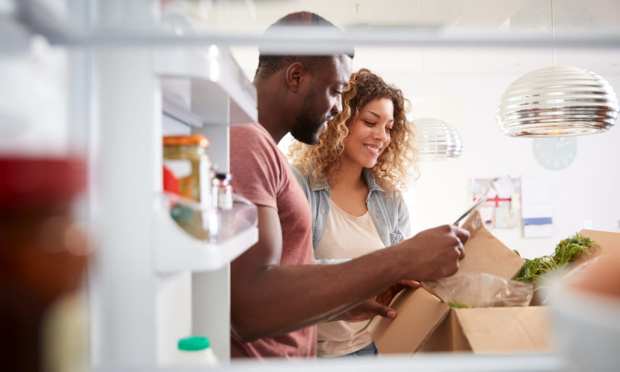Food eCommerce 2.0: Freshly Anticipates Ultra-Personalized Future

For over a year now, consumers have had to find ways to make mealtimes meaningful from the comfort of their homes. Where once they might have celebrated a special occasion or added some excitement to the work week by going out to a restaurant, now many have had to substitute those experiences with more COVID-safe solutions.
The meal delivery service Freshly has had a unique opportunity to capitalize on consumers’ changing needs, growing its customer base and offerings, and in October, the company was acquired by Nestlé for almost $1 billion. Most recently, the company partnered with celebrity chefs from a range of cultural and culinary backgrounds to launch the Chef’s Special by Freshly menu, allowing consumers who may be growing tired of their typical lockdown fare to enjoy something new and special at home.
“As the restaurant industry continues to adapt against the backdrop of the pandemic, these collaborations are a unique opportunity for chefs to expand their audience — and for customers to sample signature dishes from across the country,” Freshly CEO and Co-founder Mike Wystrach told PYMNTS in a recent interview. “Our goal is for these premium meals to help consumers add more excitement and variety into their weekly routines … We are thrilled to introduce our broad customer base to new chefs, cuisines and ingredients that may be otherwise inaccessible. ”
Innovating During The Meal Delivery Boom
In the last year, as Freshly’s weekly subscription service has acquired “hundreds of thousands of new customers,” it had to keep pace with this rapid growth. One of the key ways that the company did this was by focusing on maintaining reliable communication across the supply chain.
“When we think about technological innovation in the supply chain and food logistics, it’s important to look beyond our traditional understanding of the word ‘innovation,’” noted Wystrach. “For Freshly, it did not necessarily mean introducing a groundbreaking technology or new form of automation — in fact, one of our most important operational solutions was increasing our cadence of proactive communication with suppliers.”
He added that the company’s employees “worked even closer with new and existing partners,” checking in regularly to see how the supply chain was being affected by the unpredictable global circumstances and “identify[ing] and onboard[ing] backups where needed.”
Wystrach noted that this approach helped Freshly maintain its relationships with vendors while spotting areas in which the company needed to bring in new partners that “improved our ability to scale.” As he noted, “Simple fixes can go a long way.”
Catering To Consumers’ Changing Habits
“With the COVID-19 vaccine distribution underway, there is hope that full recovery will soon follow suit,” said Wystrach. “Still, we should anticipate that some people may not feel comfortable eating in any sort of restaurant setting for some time.” Instead, he said, consumers will “continue to … gravitate toward convenient, specialty foods to add more excitement to mealtime.”
While this is an unsurprising assessment from the CEO of a meal delivery service, PYMNTS research indicates that there is something to it — in fact, about three-quarters of consumers who have begun ordering cooked meals for pickup or delivery more often during the pandemic expect to maintain some or all of the changes they have made to their ordering behavior.
Looking ahead, Wystrach predicted, “Given the rise in demand for convenient meal solutions while many consumers work from home, we only see the trend accelerating when people return to the office … going forward, consumers will continue to avoid going to brick-and-mortar stores to shop for food, and the food industry will finally fully embrace the online direct-to-consumer (D2C) model — a major boom for the meal delivery space.”
Food eCommerce 2.0
Looking at the prepared meal delivery space as a whole, Wystrach noted, “We see a massive shift in food and eCommerce. Whether it’s the rise of companies like Freshly, DoorDash or Uber Eats, this only scratches the surface of the eCommerce boom that is heading for the food industry — this is what I call food eCommerce 1.0. What I’m really excited about now is this idea of food eCommerce 2.0.”
So what is food eCommerce 2.0? It involves harnessing the data that the recent boom has provided to these companies to create experiences that meet each individual consumer’s needs and preferences, getting increasingly specific with menu and platform innovations.
“Once companies transform the capabilities of online transactions, they are unlocking the incredible potential for a new way to empower their customers,” said Wystrach. “The future of food will utilize data to give consumers their own personal chef or personal nutritionist, regardless of the platform — whether they’re buying a Freshly meal or weekly groceries. Everything will be built around data that helps customers make better-informed decisions around where they want to go in food.”
